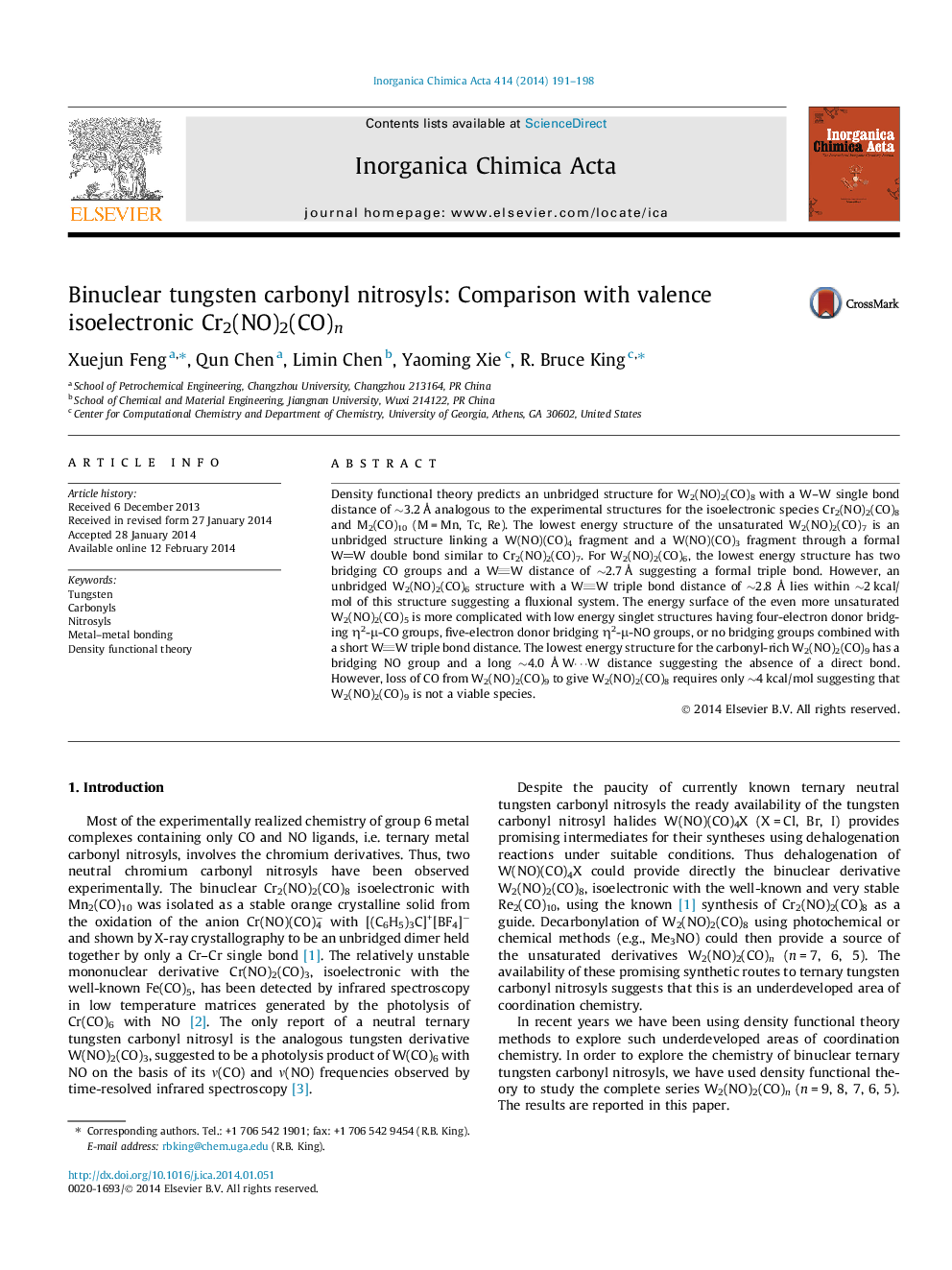| Article ID | Journal | Published Year | Pages | File Type |
|---|---|---|---|---|
| 1305683 | Inorganica Chimica Acta | 2014 | 8 Pages |
•The W2(NO)2(CO)n (n = 9, 8, 7, 6, 5) systems are studied by density functional theory.•An unbridged W2(NO)2(CO)8 structure is predicted with a formal W–W single bond.•An unbridged W2(NO)2(CO)7 structure is predicted with a formal WW double bond.•A doubly CO bridged W2(NO)2(CO)6 structure is predicted with a formal WW triple bond.
Density functional theory predicts an unbridged structure for W2(NO)2(CO)8 with a W–W single bond distance of ∼3.2 Å analogous to the experimental structures for the isoelectronic species Cr2(NO)2(CO)8 and M2(CO)10 (M = Mn, Tc, Re). The lowest energy structure of the unsaturated W2(NO)2(CO)7 is an unbridged structure linking a W(NO)(CO)4 fragment and a W(NO)(CO)3 fragment through a formal WW double bond similar to Cr2(NO)2(CO)7. For W2(NO)2(CO)6, the lowest energy structure has two bridging CO groups and a WW distance of ∼2.7 Å suggesting a formal triple bond. However, an unbridged W2(NO)2(CO)6 structure with a WW triple bond distance of ∼2.8 Å lies within ∼2 kcal/mol of this structure suggesting a fluxional system. The energy surface of the even more unsaturated W2(NO)2(CO)5 is more complicated with low energy singlet structures having four-electron donor bridging η2-μ-CO groups, five-electron donor bridging η2-μ-NO groups, or no bridging groups combined with a short WW triple bond distance. The lowest energy structure for the carbonyl-rich W2(NO)2(CO)9 has a bridging NO group and a long ∼4.0 Å W⋯W distance suggesting the absence of a direct bond. However, loss of CO from W2(NO)2(CO)9 to give W2(NO)2(CO)8 requires only ∼4 kcal/mol suggesting that W2(NO)2(CO)9 is not a viable species.
Graphical abstractDensity functional theory predicts unbridged structures for W2(NO)2(CO)8 and W2(NO)2(CO)7 with formal W–W single and double bonds, respectively. For W2(NO)2(CO)6 a doubly CO-bridged structure with a WW triple bond is predicted.Figure optionsDownload full-size imageDownload as PowerPoint slide
